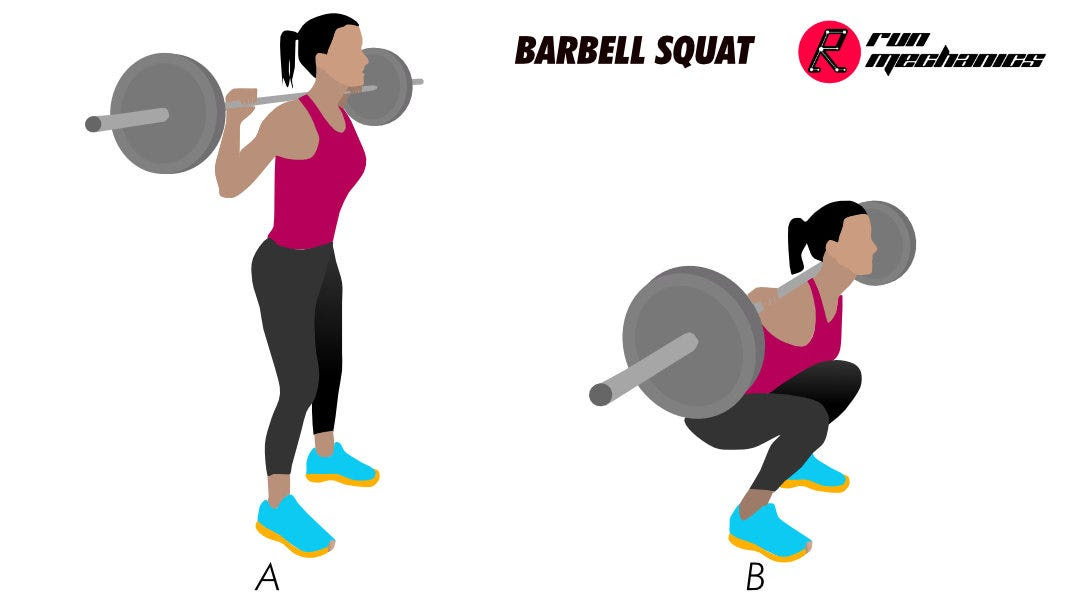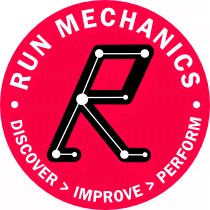Barbell Squats are an all round workout, and are a great way to strengthen the muscles, particularly the quadriceps, hamstrings, and glutes. It improves stability of the joints - glutes, knees and ankles. It also helps improve your running performance by providing better force and power generation during your runs.
Barbell squats can help improve your posture, which can have a positive impact on your running form. Good posture can also help reduce strain on your lower back, which is a common problem for runners.
How to do it?
- This exercise requires barbell of 10 - 20 kgs
- Start by standing with your feet shoulder-width apart, core engaged.
- Position the bar such that it rests on your upper back(traps), just below your neck. Grasp the bar with your hands slightly wider than shoulder-width apart as shown in figure A.
- Keep your chest up, shoulders depressed, and your core engaged. Take a deep breath in and brace your core.
- Lower yourself down into a squat position, bending at the hips and knees. Keep your weight on your feet and make sure your knees are in line with your toes, as shown in figure B.
- Continue to lower yourself down until your thighs and hips are just below your knees.
- Pause for a moment at the bottom of the squat, then push through your heels and lift yourself back up to a standing position.
- Exhale as you push up, and make sure to keep your core engaged and your back straight throughout the entire movement.
- Repeat the movement for the desired number of times.
Watch out
- It’s important to start with a lighter weight (just the bar without plates) and focus on proper form before increasing the weight. It’s also recommended to have a spotter or trainer present to ensure your safety and correct form.
- While squatting down ensure your heels are fully on the ground and not lifting off from the ground. If you are not able to do so, you might need to work on ankle mobility.
- Ensure your knees are not caving in as you raise up. If they are, you need to work on your adductor strength.
- If you are not able to squat below parallel to the knees, you might have to extend your knees as you go out. That will give you more space and ability to go further down. Pushing your knees out also helps you use adductors more when you raise up.
- Rounded back is a common issue with beginners as you squat down. Ensure your chest is up, and back is engaged as you go down. Work with light weights till you are able to master this.
When to do it?
Include this as part of your strength training 3 sets of 8-10 repetitions.

